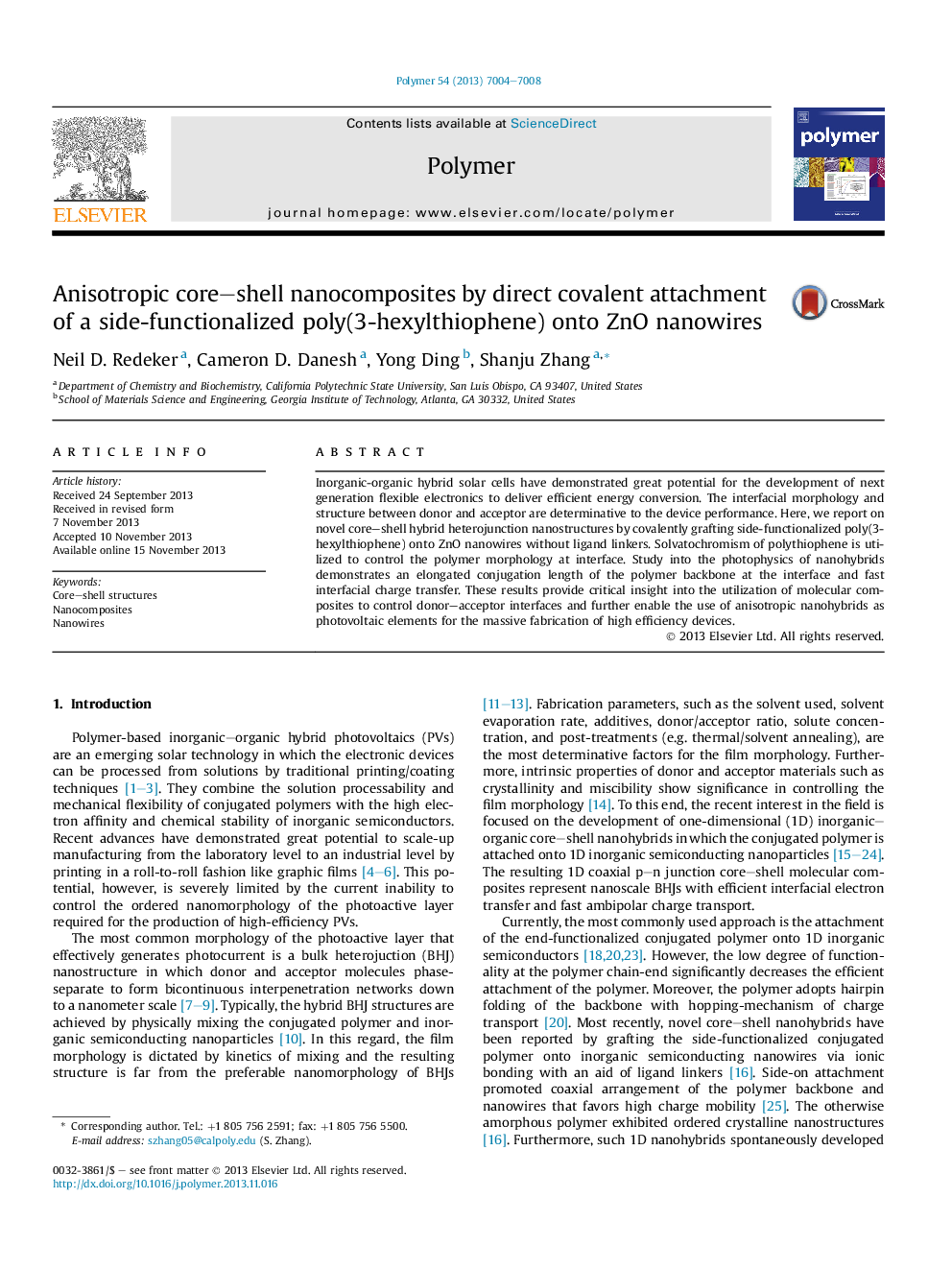| Article ID | Journal | Published Year | Pages | File Type |
|---|---|---|---|---|
| 5181265 | Polymer | 2013 | 5 Pages |
Inorganic-organic hybrid solar cells have demonstrated great potential for the development of next generation flexible electronics to deliver efficient energy conversion. The interfacial morphology and structure between donor and acceptor are determinative to the device performance. Here, we report on novel core-shell hybrid heterojunction nanostructures by covalently grafting side-functionalized poly(3-hexylthiophene) onto ZnO nanowires without ligand linkers. Solvatochromism of polythiophene is utilized to control the polymer morphology at interface. Study into the photophysics of nanohybrids demonstrates an elongated conjugation length of the polymer backbone at the interface and fast interfacial charge transfer. These results provide critical insight into the utilization of molecular composites to control donor-acceptor interfaces and further enable the use of anisotropic nanohybrids as photovoltaic elements for the massive fabrication of high efficiency devices.
Graphical abstractDownload full-size image
